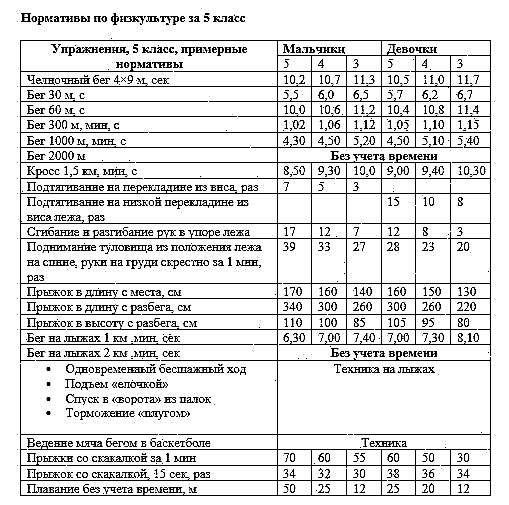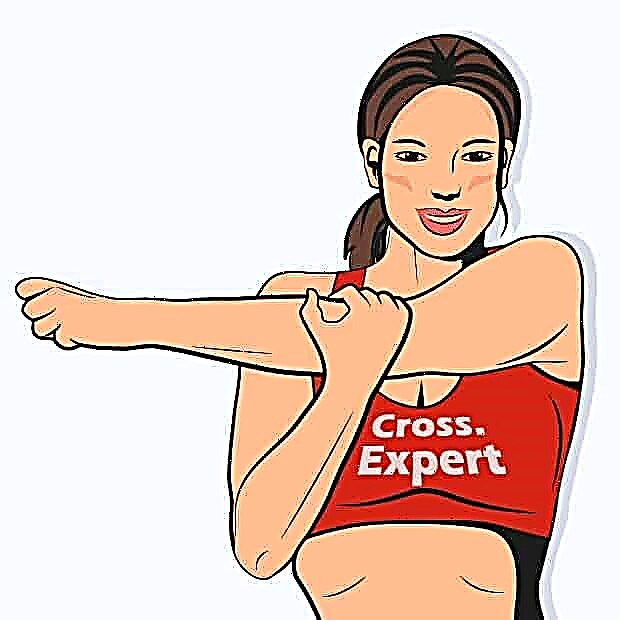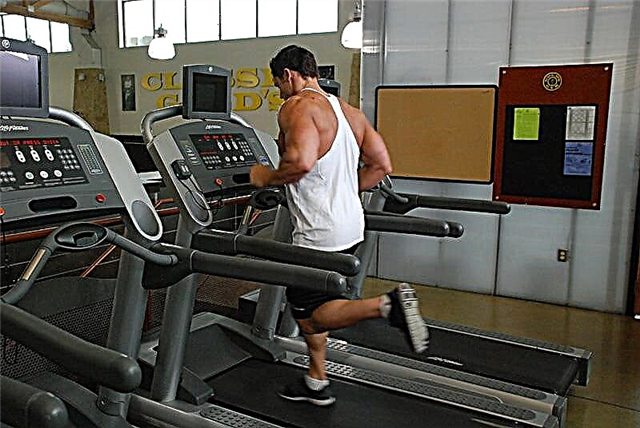Let's talk about how to ride a bike correctly, because being able to ride does not mean that it is technically correct to ride. Meanwhile, your endurance, comfort and safety depend on the technique.
Speaking of safety! If you are a beginner and are just learning to ride, be sure to wear a protective helmet on your head, and special pads on your elbows and knees. Learn to ride on a level and smooth surface, without holes or bumps. Be sure to study the literature on the topic “how to fall off the bike”, because unfortunately, you cannot do without it at the initial stage.
So let's figure out how to ride a bike properly - exploring each step in detail from scratch. Ready?
Preparation (what to check before driving)
Before moving on to the rules of how to ride a bike on the road, let's get ready for the first workout:
- Find an unpopulated area with a level surface. If your balance is poor, consider a lawn with soft grass or a dirt road with loose soil. Keep in mind that it is "more pleasant" to fall on such soil, but driving and pedaling is much more difficult;
- It is good if there are gentle slopes on the site chosen for training - this way you will learn how to properly ride from the hill and back;
- Check the rules for cycling in your city - is a helmet required, is it possible to drive onto sidewalks, etc.;
- Wear comfortable clothes that will not cling to mechanisms and interfere with your ride;
- It is advisable to choose shoes with closed toes to protect your toes in case of falls or emergency braking;
- Learn to ride during the day, in good dry weather. Bring water with you, good mood, and preferably a companion who will help with balance at the beginning.

How to sit down correctly
Well, you have prepared, found a site, dressed, and did not forget about the protective kit. It's time to practice - let's figure out how to properly ride a bike on roads and tracks!
- First, lower the seat so that you can place both feet on the ground while holding the bike between your legs.
- Try to kick off the ground with your feet and drive a little forward - feel how the bike rolls, try holding the steering wheel to turn a little;
- Now it's time to ride and pedal. Sit up straight, physically feel your body weight, and try to distribute the weight evenly on both sides. Place one foot on the upper pedal and press down gently in a circular motion. Place the other foot immediately on the lower pedal and catch the movement by pressing on it when it is at the top;
- Look ahead - if you study the ground, you will definitely fall and never make friends with balance;
- If you have an assistant, have him support your lower back. Not for the bike, because it helps you maintain balance.
How to brake correctly
Learning how to brake is essential to properly pedaling your bike. In this case, you will subconsciously be sure of your safety, because at any time you can stop.
Bicycles are equipped with a foot or steering brake. Sometimes both.
- If there are levers on the steering wheel, these are steering brakes, they are responsible for the front and rear wheels. Understand the mechanisms of their work, push on the handles, slowly rolling the bike next to you. You will see that if you apply the rear brake, the rear wheel stops spinning. If the front wheel stands up, but before that the bike will "jerk forward" slightly.
- The foot brake is applied by pedaling in the opposite direction - to do this, simply press the rear pedal towards the floor.
- Fixed gear bikes have no brakes, so to slow down, stop pedaling, hold them horizontally with your whole body leaning forward slightly.
To get off the bike properly, you first need to put one foot on the surface, then swing the other so that the bike is on the side.
How to drive properly
Correct cycling is based on maintaining balance and measured pedaling. Correct pedaling on a bicycle, in turn, is based on the concept of cadence - the frequency of a full revolution during rotation. So, if you know how to drive correctly, you have a stable cadence, which means that the speed does not decrease due to slopes or inclines. An exception is if you want to slow down or accelerate.
If you manage to "catch" your cadence, you will be able to ride the bike for a long time without getting tired and having great pleasure. In this case, the most important thing is to turn the pedal not only at the stage of a comfortable quarter of a rotation, but during the entire revolution. Try to drive this way - it is worth understanding this once and there will be no further problems.
To learn how to maintain balance, forget about it. Just sit down and drive. Yes, at first you might fall a couple of times. Then you will be skidded from side to side, and the bike will stubbornly try to ride in a circle. It's okay - believe me, it happens with all beginners. A couple of workouts and you will learn. Moreover, you will never understand at what point the problem with balance disappeared. You just realize that this is no longer a problem for you.

How to turn correctly
To cycle properly on the road and trail, you must be able to not only ride, but also turn.
- While driving, smoothly turn the steering wheel in the direction you want to turn;
- Feel how the bike behaves, feel the change in direction of movement;
- Keep your balance;
- At first, do not jerk the steering wheel too sharply, do not seek to make a sharp turn;
- If you lose balance, apply the brakes or jump off the bike with one foot to the ground (only if the speed is slow).
As you can see, learning to turn correctly on a bike is not difficult, the most important thing is to keep your balance and take your time.
How to ride right downhill
Despite the fact that the bike can ride off the hill on its own, the descent also requires adherence to the correct technique:
- The first couple of times go down several times without pedals, while the seat is lowered so that you can slow down with your feet (just in case);
- When you learn to maintain balance, try to put your feet on the pedals;
- When descending, try to apply the brakes smoothly to slow down slightly. Do not under any circumstances brake with a "stake", otherwise you will fly somersault;
- When the descent is complete, calmly continue forward.

How to properly shift / accelerate
So, we learned how to pedal correctly on a bicycle, it will be a little more difficult further. Let's go over the basics of proper gear shifting:
- It is most convenient to switch speeds with your left hand;
- For reverse gear use the right hand;
This is how the gearbox works on a bicycle: it is easier to pedal in low gears, but you will be covering a short distance. High gear is more difficult, but you will go much further.
To downshift, change to a smaller sprocket in the front or a larger sprocket in the back. And vice versa.
So, to go faster and further (to accelerate), shift into higher gears. To overcome a difficult area with bumps and holes, that is, to slow down, turn on the lower ones. In lower gears, it is recommended to turn and brake. If you want to be able to cycle properly uphill, also master low gears.
Learning to drive and operate the gearbox is recommended on level ground. You should feel that when changing gears, it becomes easier or more difficult for you to pedal and feel like the bike literally rushes forward and rides for a long time at one revolution, or completes a full rotation in much less time.
If you learn how to accelerate correctly on your bike, that is, do it with minimal physical costs (and this is what you need a box for), riding will become a real pleasure for you.
How to park correctly
Next, we will find out how to properly park your bike in the parking lot - this is important to know from the point of view of ethics in relation to the people around you. And also, this is a guarantee of the safety of your iron horse and a guarantee that it will not be hijacked.
- Park and fasten your bike in special parking lots;
- If there is no dedicated bike parking, find an iron fence, but place the bike on the inside of the fence so that it does not interfere with passers-by;
- Among other bikes, fasten your bike in the middle (it's safer this way);
- To clip on, look for a fixed object that is difficult to break or uproot;
- Block exactly the frame, not just the wheel, which is easy to unscrew and leave with the main structure;
- Try to keep the lock not too close to the surface. In this case, it will be easy to break it with a bolt cutter that uses the ground as a fulcrum;
- Fasten the lock so that the hole is directed towards the ground - it is more difficult to break it;
- You can park the bike with two locks or one and a chain;

How to jump onto the curb
Of course, the height of the obstacle should be reasonable - no more than 25 cm, otherwise, it is better to dismount or go around;
- Slow down in front of the curb;
- Lift the front wheel up by the steering wheel;
- When it is in the air, as it were, plant it on the curb and immediately shift your body weight forward;
- The rear wheel, having lost its load, will itself jump onto the obstacle, following the front one;
- That's all the technique.
- To get off the curb, also slow down, shift your weight back and slightly lift the front wheel up. Move gently off the obstacle and keep driving.
The correct cycling technique only seems difficult at first. The whole point is that as soon as you master the basics, you will immediately drive technically correct without any problems. It's like swimming - once you learn to keep your body afloat, you will never drown. Good luck to you! And finally, nice statistics. On average, a person needs only 8-10 bike sessions to learn to ride quite tolerably.









